Archives
now browsing by author
The number of the day …

233 – the day of the year. (It’s a leap year, so there are 133 days left.)
158 – the number of days since I started teleworking and social distancing from people. (I visited three friends in Raleigh in July, and have been on a socially distanced walk with a friend.)
23 – the number of says I walked one extra mile on my “new to me” treadmill in June.

25 – the number of days in a row I have done yoga.
13 – the number of days until I turn 47.
1308 – the number of days the current president, a known sexual predator, has been in office.
Counting days. It is what I do now. Counting days, counting blessings, counting time, counting infections, counting deaths (174,178) until the numbers no longer register.
The counting started with my social distancing (SD#) that I keep in my journal. It was a way to build in reflection, to monitor change. I read enough fiction and non-fiction to have known from the beginning that this would be on-going, and that it would lead to change. I wanted a way to reflect about the way the social changes, changed me. Yeah, I know. It all sounds pretty bleak. It is and it isn’t. I am very well aware of the good in my life. One change, however, is that I do not use the good to hide from the difficult, challenging, and sometimes bleak, truth. As challenging as it is, I would also argue it is a good change.
How else has this time changed me? I don’t have that answer yet. I am here in the middle of it, counting days and trying to hold space. Trying to breathe in the tension between the blessings and joy in my life and the reality of the world around me.
Today I learned that 1448 days ago on September 2nd, 2016, as I celebrated my birthday, and unknown to me Judge Paul Benshoof used his signature to grant me a divorce, Chanel Miller had to watch Brock Turner be released from jail. I’ve been listening to Know My Name. It’s taken me a while, because I can only listen to so much at once. It’s taken me a while, because it is so powerful, moving, heartbreaking, and beautiful. It is out in paperback this week, and I encourage you to get it. I’m sad to know such a thing happened on my birthday; but, frankly, 2016 was my personal 2020, so I am also not surprised. I am angry as I listen that more has not changed. This year, on my birthday, I want only good to happen for Chanel Miller and all the survivors of sexual assault and sexual aggression in the world. We deserve it.

Unexpected Joy
![They Can't Kill Us Until They Kill Us by [Abdurraqib, Hanif] Book cover. Blue background, picture of wolf head and chest on a man's body wearing a red track suit with white strips down the shoulders and arms, and a thick gold chain around its neck.](http://grabow.co/wp-content/uploads/2020/02/TCKUUTKU-150x150.jpg)
Sometime last fall, in the space between knowing my life would change and that change beginning, I started to read Hanif Abdurraqib’s They Can’t Kill Us Until They Kill Us. Ouiser’s recommendations never steer me wrong. You can trust them as well. I savored this collection of essays. Reading for a few days in a row before turning to another book as the mood struck me, but always returning to dip back into the space and sound of the writing. Abdurraqib writes about a wide variety of music, by weaving his story into the experience of listing or attending a concert. He uses those stories to reveal the contemporary moment in a way that made me pay closer attention to the music filling my world. Everyone should buy the book, even if you only read “A Night in Bruce Springsteen’s America.”
![They Can't Kill Us Until They Kill Us by [Abdurraqib, Hanif] Book cover. Blue background, picture of wolf head and chest on a man's body wearing a red track suit with white strips down the shoulders and arms, and a thick gold chain around its neck.](https://images-na.ssl-images-amazon.com/images/I/51D8sJcFPRL.jpg)
There are so many tools that are made for my hands.
But the tide smashes all my best laid plans to sand.
Neko Case – Night Still Comes
In the final pages of the book, Abdurraqib elegizes 2016. A year that many of us individually, and as a nation, struggled to survive. To think about what happened in the country in 2016, I have to carefully untangle each event – each death, each killing, each mass shooting – from the death of my marriage. For me, 2016 is an endless coordination, getting my ex-husband to help, alerting his family, talking with doctors, finding someone to care for the animals as I constantly drove from Bemidji to Fargo and back each Saturday from January – March, bringing him home, returning him to another hospital, and starting the cycle over. Navigating 2016 took every tool at my disposal, and, at every turn, each plan I made smashed against the reality that my marriage was over.
Abdurraqib’s elegy for 2016 takes a different approach. Describing his response to the horrific Pulse nightclub shootings in Orlando, Abdurraqib recounts how the sounds of children riding their bikes reminds him that it is in the small moments of joy that we regain our strength to return to the fight.
And, as I think about 2016, I remember the phone calls. Long talks with friends and family full of tears and laughter. I remember the unexpected care packages. I remember the happy hours spent eating fried foods and deepening new friendships. I remember learning to accept the help offered. And, I realize how each of these moments renewed my strength. The cleansing tears shed with friends. The laughter at a macabe joke, because … what else can you do? The warmth brought by a smile and an invitation to lunch. The joy – large and small – made it possible for me to make it through the night I feared for my safety, for me to pick up the pieces as each plan failed, for me to know without a doubt when it was time to let go.
I do it for the joy it brings
Ani DiFranco ~ Joyful Girl
‘Cause I’m a joyful girl
‘Cause the world owes me nothing
And we owe each other the world
Abdurraqib concludes, “Joy, in this way, can be a weapon–that which carries us forward when we have been beaten back for days, or moths, or years.” And I remember how beaten down I felt in the years leading up to 2016. How alone I felt trudging from one crisis to the next just trying desperately to hold it together, to make sure I could provide for my family. Yes, there were moments of joy in those years, friendships made, but I remember how my smile rarely reached my eyes, and my guard never fully came down. In 2016, joy became my weapon. It carried me forward each time an event beat me down. Joy also became the weapon of my recovery. It flooded my life in the fall of 2016: the house full of friends at the birthday party I threw for myself, the renewal of old friendships, the long mornings and afternoons on the deck, the comfort of the dogs and cat as we settled into our new normal. The joy in those moments, big and small, salving my wounds, healing me, and carrying me forward.
My cup …

My status as a fan of Sandra Bullock movies shouldn’t surpise anyone at this point. For me, and I am pretty sure for many Gen X women, Bullock embodies the “woman facing hardship gets her happy ending” trope. Yes. She has done more, and better, but there is a magic, charm, and relatability to Bullock that make Practical Magic, Hope Floats, 28 Days, Divine Secrets of the Ya Ya Sisterhood, and even Miss Congeniality go to comfort movies for so many of us.
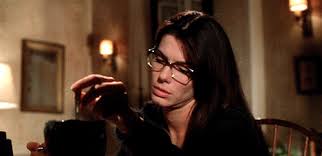
Sure, I may have watched my share of Hallmark movies, but when I really want to dream about love, I watch Practical Magic. Dreaming about Sally Owens conjuring a man she thought couldn’t exist and magic bringing him to her at just the point when she needed him, makes it feel possible that the the man I think doesn’t exist is out there and will show up at just the right time.
Practical Magic may be the movie I watch when I need something to make me believe in love again. Hope Floats is the movie I watch when I need to remind myself that the world will right itself, and that regardless of where I am from or what has happened to me, life will right itself. I will get through. Life is long; rise up, as my tattoo reminds me.
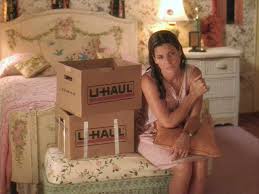
Birdie Calvert/Pruitt’s life spectacularly crashes, burns and she must return home to recover and rebuild herself. So much happens here it is a feel good movies for nearly every situation, as long as you like your inspiration to come while tears well in your eyes. For me, the hope in this movie, the message that floats above all the others isn’t about the patient and deep love waiting for Birdie when she is ready. The hope is in the way her relationship with her mother changes over time.
Ramona Calvert tries to teach her daughter is one of gratitude. At the beginning of the movie, worn down by her experiences, all Birdie can see is the way life has let her down. In contrast, Ramona embraces the joy in her life, and her most repeated line – and the lessson to Birdie – is that “Her cup runneth over,” meaning her life is full of blessings, even in hardship.
I have my moments, and I swear every time I face unpacking from a move, a part of me feels like Birdie Pruitt moving home. In the last six years, I’ve moved across the country, divorced, moved back, accepted a new job with a formidable learning curve, moved again, and find myself in a completely new region. In that time, I have also learned who I am, how to love myself, and how to accept what I deserve.
Each day, as I walk Moshe around the neighborhood, as I pass through the gates and drive into work watching the sunrise over the Potomac, my heart fills and all I can think about is how my cup runneth over. As much as I am grateful and love my life, I still long.
I don’t often talk about this, but I am still searching for a partner. Contemporary dating is a very unique and special kind of soul crushing endeavor. On one hand the options are seemingly endless (just keep swiping); yet, on the other, every swipe leaves you feeling more an more alone. For the last two years, the first item on in the Must Have portion of my Conditions list has been Love. Last year, amongst all the dating, I fell deeply in love with myself for the first time. I have no idea how this year will turn out yet. As Valentine’s Day approaches, I can tell you I do not feel very hopeful about romantic love. Yet … my cup still runneth over.
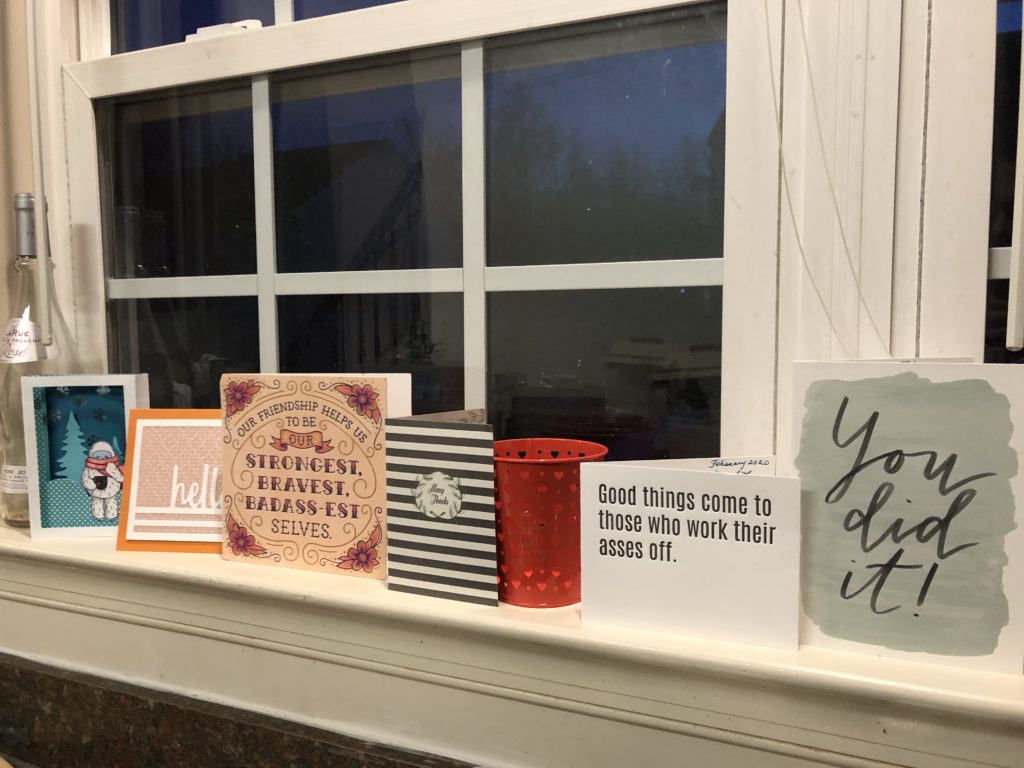
In all honesty, my life is full of love. Girlfriends from high school to those I made in moving here, have called, sent me cards, or gifts. Each gesture reminds me of just how much love I already have in my life. These women see me. They know my best, worst, and just how far I have come. They teach me how to celebrate myself; and, by showing me their love, they teach me what to expect from someone who claims to love me.
I may not have found my Aidan Quinn or Harry Connick Jr. just yet; until I do, I will hold on to the way my girlfriends make me feel. Because, for each card here, there are at least 2 – 3 more who have show their love in other ways. I carry this with me always. My cup runneth over; and, my girlfriends set the bar for how to love me.
Long and winding …

Much like the summer of 2017, when my experience in the House of Plagues forced me to move twice within a month. The last six months of 2018 unexpectedly involved two moves.
In July, I left my beloved, neat, little bungalow with the red door and moved in with a colleague to be closer to work. A great idea at the time, it saved me some money and meant that I could walk to work.
Something else happened in July, though, something that would make this move short – lived and change the direction of … well, everything. On July 12th, I submitted an application for a job that sounded like someone had been listening to everything I said I wanted from my career. Had I not been moving a thousand miles an hour trying to work, pack, have a life, and put together this application, I might have thought a little harder about it all. I may even have talked myself out of applying, but I didn’t.
When, as I unpacked all my stuff into my room and closets in the new house, I learned I’d made it to the first round of interviews, I was amazed and so excited. I went to the website and downloaded one of the pictures from their carousel and made it the desktop background on my new laptop. The interview day came and went. A video interview from my office to theirs, it felt like it went well. A few of my answers felt unfocused, but I made them laugh a few times, so I hoped that would even things out.
As the weeks passed and I didn’t hear about the expected second round of interviews, I started to lose hope. Perhaps I wasn’t meant to work on that beautiful campus next to that river. It didn’t occur to me that I hadn’t heard about a second interview, because they’d decided to offer me the job based on the first interview! But, yes, dear readers, that is exactly what happened!
Okay. Seriously. From here on out, you cannot complain about the amount of exclamation points, because you cannot underestimate my level of shock, awe, and excitement. Yes, this job represents nearly everything I wanted in my career. It also represents a dramatic shift in location. It requires me to move to a major metropolitan area. Something I never thought I would do, but I am completely on board with and cannot wait to do! (Okay, the rent prices did give me pause, but life will definitely be worth it!)
In January, after setting “foundations” as my word for the year, a dear friend told me I needed to be “foundationally brave.” I took her advice to heart all year. “Foundationally Brave” post-it notes resided on my mirror, on the edge of my monitor at work. The reminder was always there as I considered what I wanted my life to be. Yet, in January, I could never have conceived of where this phrase would take me.
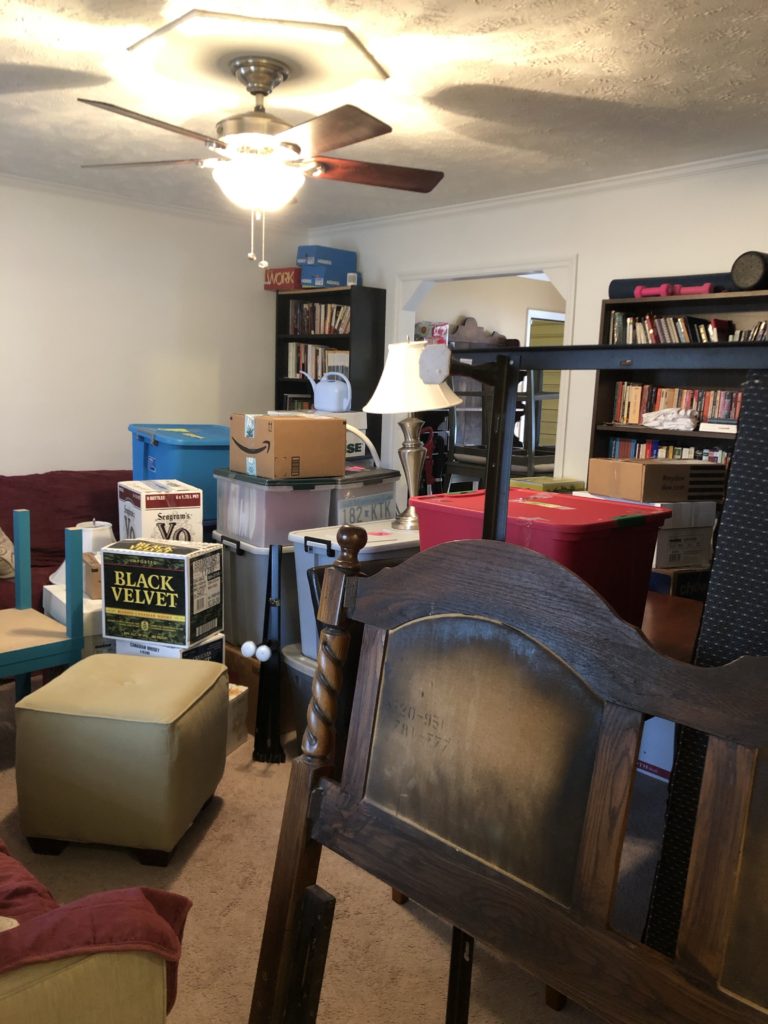

Once again, I downsized, shed about 1/4 of what I had left, or acquired, since the last move. I packed up all my stuff, and this time movers came to take it away. Tomorrow morning all the living things, and last little bits will head off on the five hour trip to our new home.
We will get to ring in the New Year, in our new space, and then wait for the rest of our stuff to get there. On Monday, January 6, 2020. My new life will really begin, when I report for my first day of work. In addition to adapting to this new environment and learning the ropes, I know there is at least one major project waiting for me; and, through all the changes, all the moving hassles, all the unknowns, the stress is mitigated by my excitement. I cannot wait to start this new life!
I’m not making any promises about how and when I will post around here, but I do intend to chronicle all these changes. Right now, I’ve kept things vague, just because I am not sure exactly how I want to talk about them yet. I will figure it out as I go, and I, honestly, cannot wait to take you all with me!
Reading Series: The Freelance Academic

Getting an advance readers copy (ARC) of a book invariably involves knowing someone and a promise to write a review of the book. You might know someone at the publisher, or have a friend who knows someone. At any rate you know someone who knows you have an interest in the genre or subject matter, and that you could provide a review. Yes, I am dorky enough that I love the way getting an ARC makes me feel like an insider. With this ARC, I have the additional privilege of knowing the author. Having met Katie Rose Guest Pryal in graduate school, not only have I had the privilege of calling her a friend, I have known her during many of the events in this book.
For the first time, knowing the author whose ARC I’m reading, considering her a friend, made writing this review difficult. I finished The Freelance Academic, a couple of weeks ago. Sure, some of my delay posting stems from scheduling. Mostly, however, the delay comes from how much I want you all to read this book. As I struggled to develop my thoughts about why I want everyone to read this book and what I could say without giving too much away, I decided the best way to get started was with transparency. Yes, my friend wrote this book and I am about to write a very positive review about it; however, what I need for you to fully understand is that those two things are not dependent upon one another.
In Brittney Cooper’s book Eloquent Rage, she describes a home-girl intervention, as an instance when a friend firmly, but lovingly calls us on some bullshit and educates us in a way that makes us better. Cooper tells the story of a friend from her undergraduate days, who called her on her dismissal of feminism and got her to engage with bell hooks. Cooper’s engagement with hooks and feminism is clearly a defining moment for her. Cooper’s friend’s willingness to stand up to and educate her came at just the right time to shape Cooper’s thinking and career. The home-girl intervention isn’t always what we want to hear, but it is what we need to hear. It requires a friend brave enough to be blunt with us.
In The Freelance Academic, Guest Pryal steps up to do the same work for readers. There are many blog posts, websites, articles, and books out there about the state of the academic job market, reasons to leave academia, how to find work outside of academia, and a lot of what has been dubbed “quit lit” about how individual people have navigated this transition. Understandably, many of these narratives illustrate the problem with academia which has caused the person to leave, then describe the fulfilling and rewarding life leaving academia allowed the person to build. Skimming the messy, difficult time between leaving academia and getting to that fulfilling and rewarding life is understandable because those periods are often so personal, so influenced by the details of our lives that authors can be forgiven for not sharing what they may not realize could be helpful to others.
Drawing on personal experience and biography, The Freelance Academic fills in this gap. Using the details of her own story, Guest Pryal offers valuable insight and practical advice on how she has built a freelance career outside of the academy. The result is something special. By acknowledging the details of her story that enabled her to follow this path, Guest Pryal opens the door for readers to flexibly engage with her advice. For those in situations similar to her own, The Freelance Academic becomes great guide for building a freelance career. For those of us still working in academia or in different situations, The Freelance Academic still provides an amazing amount of value. It is, in the best sense, a home-girl intervention. Guest Pryal unflinchingly calls out and lays bare the conditions in which we work, and then she educates us, provides us with new way to think about the way we work and who and what we are working for. There isn’t much more I can say without spoilers. Whether you are currently in academia, considering leaving, or have just left, The Freelance Academic comes at just the right time to re-frame how you think about your work and the path you want to take.
Reading Series – Text Me
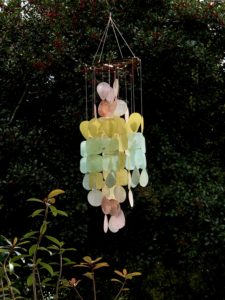
While I thought it would be the book I closed out 2018 with, Text Me When You Get Home: The Evolution and Triumph of Modern Female Friendships by Kayleen Schaefer ended up being the first book I finished of 2019. The book’s primary message that our romantic relationships do not make up the only love story of our lives isn’t one I mind carrying into 2019. Tending to my friendships is often an intention I set and re-set for myself.
When I first started reading it, I made a list of all the women I wanted to send copies to for Christmas. Ultimately, though I am glad I didn’t follow through with that plan. At the end of this book I started with such enthusiasm, I was underwhelmed. My enthusiasm for the book stemmed from the way it seemed written for me.
Circumstances being what they are, I am a straight, single, professional, white woman whose primary form of emotional support comes from her friends, which is exactly what Shaefer describes in this book. Ouiser is my emergency contact in all things. Dr. Lawyer was my person during my most recent medical adventure. I rely on Amié Volée for help with Les Animaux and her family always makes sure I have a place to go for the holidays. I could go on and on about how Dr. Revolution, Dr. Phoenix, The Banshee, and others have been just as integral in my life and form my collection of people. At the beginning of the book it felt great to read someone recognizing the importance of these friendships. I wanted to send everyone copies to show them a reflection of our relationships.
The recognition of the importance womens’ friendships can play in our lives was refreshing, but I wish Shaefer had spend more time examining the ramifications. In this extended passage she quotes and summarized Briallen Hopper, who says she is:
“not ashamed to admit that my friends are my world. They are responsible for most of my everyday joy, fun, and will to live.” [Hopper] goes on to explain that, despite, this, it can be terrifying to make friendship your main support system. The relationship is “chronically underrated and legally nonexistent.”
I wanted more of discussion about how the women who value and create these friendships work to change these ideas. To be fair Schaefer does provide examples of women listing friends as emergency contacts or beneficiaries on insurance policies. As I read though, I was longing for a more sociological discussion of the consequences of this behavior.
As I mentioned above, Schaefer’s book primarily describes and discusses the friendships of straight, single, professional, white women, which is part of what made me enjoy this book. It is nice to feel seen and represented. While Schaefer attempts to address women of color and other differences by describing positive media portrayals of these friendships, her discussion of them remains shallow. This is a comment an early Amazon reviewer made and I do think she attempted to address it in the final work. However, because it is her own story and friendships serve to illustrate many of her points, the work never feels as inclusive as it attempts to be.
Overall, I enjoyed this book. It provided me with an important mirror at just the right time in my life by reminding me that, while it may not look like a Hallmark movie or the relationship in a paranormal romance book, I do have an incredible love story in my life. My friendships are deep, abiding, and essential to my joy. In the end though, I also wanted a little more analysis and discussion.
Ongoing

One of my biggest problems with academia is that breaks are so rarely breaks. Even for those who do not have administrative work to contend with, the break so sorely needed to recover from the previous semester is too often spent preparing for the upcoming semester. Winter break is particularly problematic in this way. Anytime stolen to relax and recover from the exhaustion of the semester is tainted by the knowledge that I should be prepping and planning for the new semester.
This year at the beginning of this break I was forced into a little down time by scheduling an outpatient surgery just after I turned in final grades. Dr. Lawyer came down the night before to take care of me on the day of surgery. We had a lovely evening talking and she reminded me of some advice I gave her this summer. She’d suffered heat stroke and was dealing with recovering from this brain injury. We visited shortly after her injury and as we walked around town and she apologized for her weakness and disorientation. She had felt up to walking around when we left her house, but now she felt weak and unsure of herself. Having dealt with my own brain injury, I told her to stop apologizing and to stop being so hard on herself for not recovering faster.
I explained a significant aspect of my own recovery that was hard to see, but helped me learn to be kind to myself about many aspects of my life post-stroke. The brain is very malleable. After an injury it accepts the new situation as normal and begins to chart its new pathways. I remember that, once I had been transferred to my rehab floor, I felt completely normal, like I should be fine. Yes. Some things took longer than normal and things had changed, but essentially I felt ready to get back to my old life. Coming home from the hospital I could look back and see, “Oh, right, I was not normal. I needed that time in the hospital to recover.” Again felt “back to normal.” I didn’t feel like I needed the two months off before the next semester; and I certainly felt ready to return to teaching in January. I made it through that semester, feeling fine and going about my business. Yet once I continued to actually recover, I could see that I hadn’t been fully back to normal.
I explained to Dr. Lawyer, “You are going to feel recovered. You are going to feel like you should be, or are, back to normal. But then, in a few months or a year, you are going to reach another point in recovery where you can look back and say, “Oh, I thought I was recovered, but I wasn’t.” This is important to hold onto, especially for those of us who tend to push too hard and take on too much, because it is so easy to start to berate ourselves for slowing down, to push ourselves too hard too fast to recover and be done with it. To move on. Though I couldn’t articulate it exactly in the moment, my point for Dr. Lawyer was that recovery from her brain injury would be ongoing.
When she reminded me of this conversation, I was a little surprised. I’d forgotten I told her about that. As I close out this year and look back at where I was this time last year, I’ve been reminded how it isn’t just physical recoveries that are incremental and ongoing. At this time last year, and I am pretty sure at various points over the last couple of years, I thought I was done. I’d recovered and moved on from my marriage. I was my new self. Yet, each time I look back, I realize I have recovered more. Realize that I should have been kinder to myself along the way, because I wasn’t done. I was still healing and needed to take it slow.
As I move into the new year, I know I will lose sight of this again. I will push myself and I will get frustrated when I feel like I am not making the progress I think I should. I haven’t settled on my conditions for the year, but my word for the upcoming year is foundation. As I work to establish and strengthen the base of my relationships, my finances, my health, my self, it is good to remember that this recovery is ongoing.
Reading, Rage, and Community

Recently, one of my favorite writer’s tweeted about reading Rebecca Traister’s Good and Mad: The Revolutionary Power of Women’s Anger for an upcoming column she is writing. At the time, I was in the middle of Soraya Chemaly’s Rage Becomes Her: The Power of Women’s Anger. I suggested we should compare notes. Traister’s book is next on my list of books to read this year, but since I currently have three other books in progress, in will definitely be 2019 before I get to it.
Just before the conclusion of her book Chemaly advocates for a type of anger competency to replace the idea of anger management. She gives suggestions for how to be aware of our anger and to manage it. Number seven in her list of suggestions “Cultivate Communities and Accountability” struck me. The section opens, “Anger can feel very isolating, but, in fact, it is an emotion that demands communication and conversation. It also finds strength in community.” While the section goes on to discuss protest communities, I found myself thinking of a different community. This year in articles, essays, columns, and whole books, I have been immersed in discussions of women’s anger.
Though I could probably trace this to other texts, the first piece on anger to really stand out and shape my thought was Lyz Lenz’s essay “All the Angry Women” in Roxane Gay’s collection Not That Bad: Dispatches from Rape Culture. Describing the Bible study group she leads each week, Lenz says she meets each week with angry women and describes the sessions as a type of group therapy. A place where the women can come and hold their anger in community. Lenz identifies the way for so many women, myself included, “anger is always reserved for someone else.” Someone else always has a greater right to be angry and, therefore, I should not. It echoes the theme of the whole collection — the way the fact that someone else has experienced worse can make us feel like we do not have the right to hurt, or feel anger, or to demand justice.
In what has been the most personally revelatory passage I read all year, Lenz writes: “Anger is the privilege of the truly broken, and yet, I’ve never met a woman who was broken enough that she allowed herself to be angry.” I read this passage at a time when my counselor was trying to get me to express my anger about my marriage. Yes. My marriage broke me. Yes. My marriage gave me many reasons to be angry. But, no … I was never broken enough to allow myself that anger. I still can’t or don’t. More and more I notice that I really only allow myself anger for others, never myself.
Chemaly tells us we need community and accountability to improve our anger competency. Lenz describes the communities of angry women in her weekly Bible study. Brittney Cooper’s book Eloquent Rage: A Black Feminist Discovers Her Superpower, which I also read this year, addresses anger as well, but the primary focus is the other theme dominating my reading this year — women’s friendships. As Lenz’s writing provides the cornerstone of my reading of women’s anger, Cooper is the cornerstone of friendships for me. Filled with cultural insight and commentary, her book is a love story, an ode to her friendships. Maybe not everyone has read the book this way, but the message is there throughout: our friends intervene when we need to be set straight; they hold us up when we stumble; they champion us as we fight; and they celebrate our successes.
One of the final books I will read this year is Kaylee Shaefer’s Text Me When You Get Home: The Evolution and Triumph of Modern Female Friendship. The connection isn’t fully formed, but I am struck by how these themes anger, community, and friendship enveloped this year. Perhaps, the idea I’m reaching for is that circling behind it all in subtitles and inferences is the idea of power. Individually we each hold power, but when bound together into communities, bound together by our anger for others and ourselves, that power multiplies. Power energizes and it buoys. Our friendships generate it and our anger focuses and wields it. Perhaps that is is why at the end of a year of reading about women’s anger, I feel so hopeful.
June is Busting Out All Over

If you are at all familiar with the musical Carousel, please forgive me for putting that song in your head. If you aren’t the linked video is a special peak into musicals circa 1956. Watch it, if you can. Also, take comfort in the fact that, due to a bit part in our high school production of said show, it is going to take me at least a week to get it out of my own brain. In my last entry, I inadvertently set forth a challenge that the rest of June would have to work to live up to the first day. Apparently, the challenge was accepted in all the best ways!
Read the rest of this page »
The Best First Day

Look, too often the days that are often supposed to be significant end up being not. Yesterday though .. yesterday was the First of June. Maybe not a national holiday, maybe not even the official first day of summer, but it was the first of the month and, man, the rest of June will have some living up to do!
Read the rest of this page »







 D5 Creation
D5 Creation